Texas is no stranger to theatrical prestige. Both Dallas Theater Center and Houston’s Alley Theatre have won the distinguished Tony Award for Outstanding Regional Theatre, but to understand the full scope of the state’s creative force, you have to look beyond the conventional.
Each one is shaping the cultural identity of its community by trusting their own artistic instincts, investing in homegrown talent, and inviting audiences to take a different kind of journey. For the adventurous theatergoer, these small but mighty groups offer something far more rewarding than familiarity—they offer discovery.
Obviously, they are but four among hundreds, and innovative theater is (thankfully) happening all over the Lone Star State. You just have to seek it out.
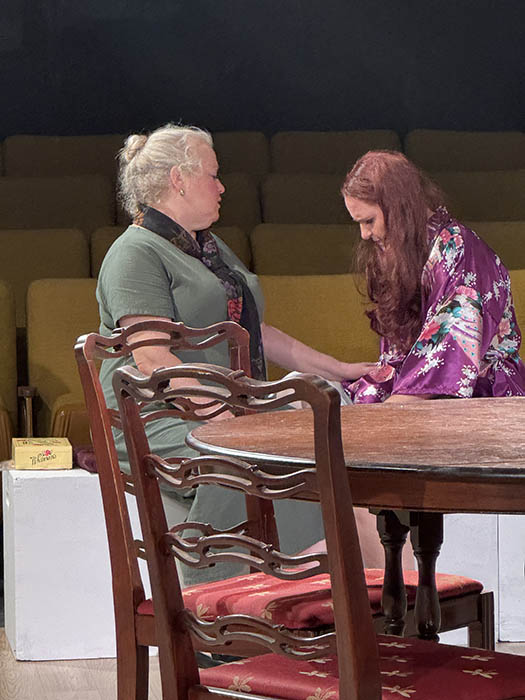
1 ⁄7
Gigi Greene and Rachael Altman in the Navasoda Theatre Alliance production of Crimes of the Heart. Photo courtesy of Navasoda Theatre Alliance.
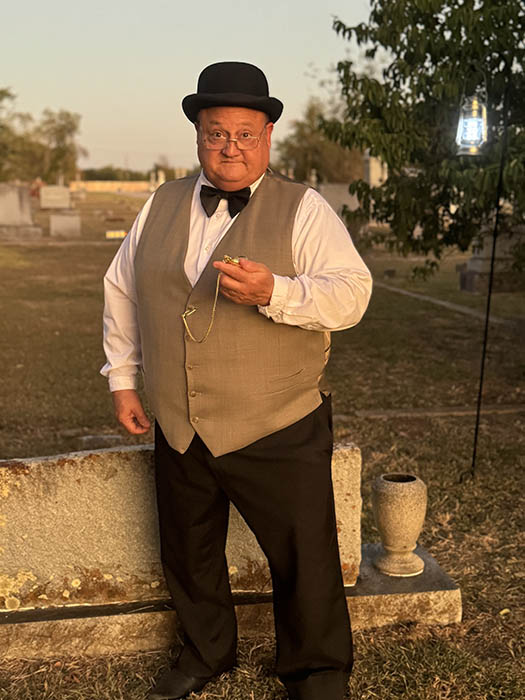
2 ⁄7
Mark Taylor portraying Buck Sangster in Lanterns & Legends: Faces in the Windows at Oakland Cemetery, Navasota, TX. Photo courtesy of Navasota Theatre Alliance.
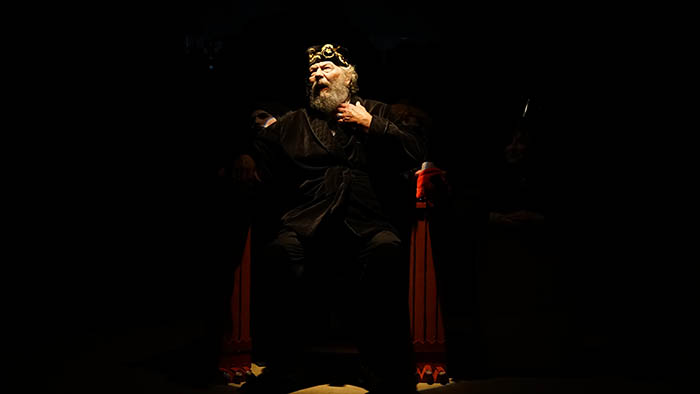
3 ⁄7
Matthew Posey in the Ochre House Theater production of Moving Creatures, written and directed by Matthew Posey. Photo by Trent Stephenson.
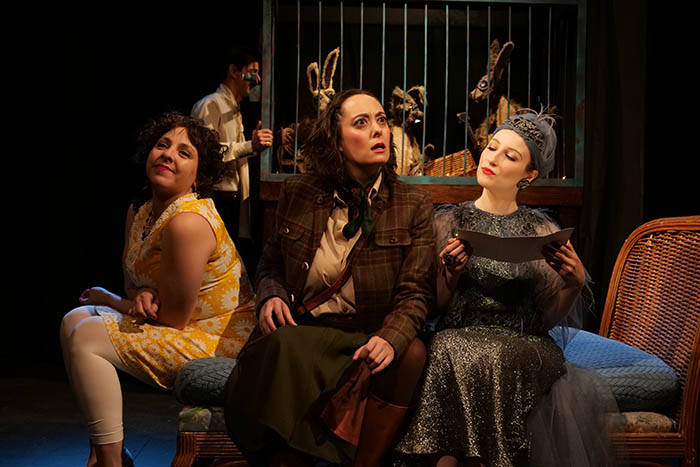
4 ⁄7
Marti Etheridge, Omar Padilla, Meagan Harris and Lauren Massey in the Ochre House Theater production of Daddy’s Rabbits, written and directed by Carla Parker. Photo by Zack Huggins.
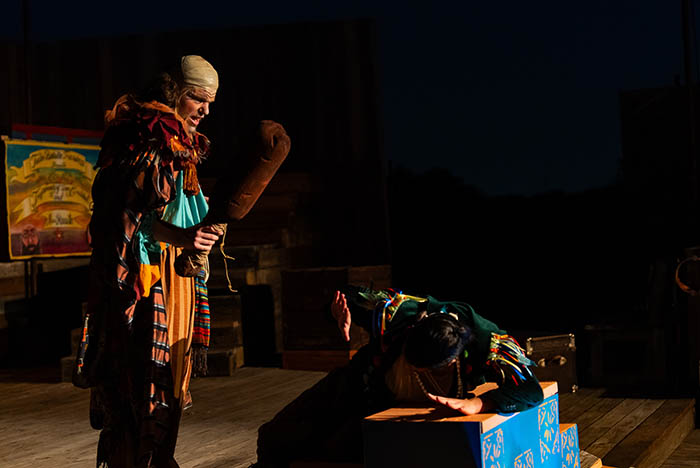
5 ⁄7
Coleman Hahn and Ron Fernandez in the Hip Pocket Theatre production of The Billy Club Puppets. Photo by Cameron Martinez.
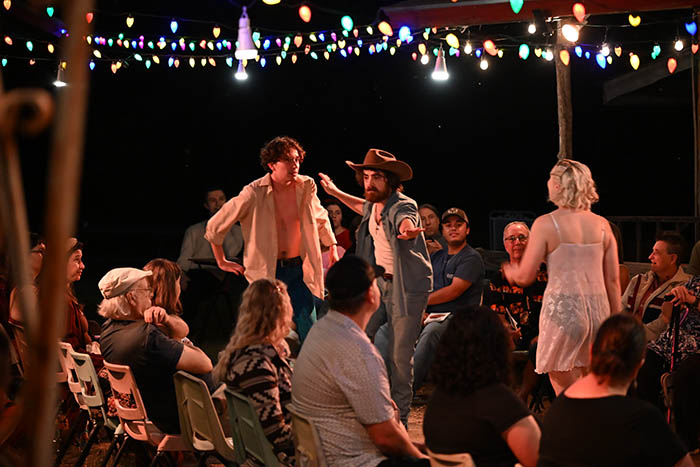
6/7
Tyler Manley, Claire Fountain, and Colin McThorn in the Hip Pocket Theatre production of The Mad Dog Blues. Photo by Richard Massey.
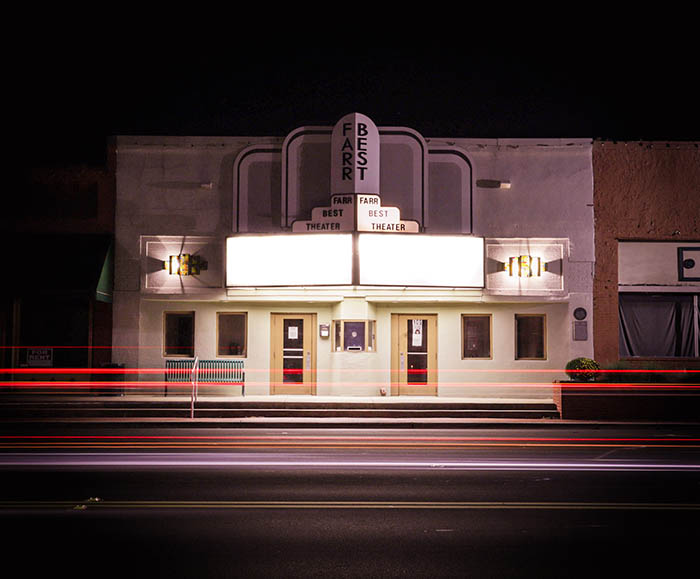
7 ⁄7
Farr Best Theater; Photo courtesy of Farr Best Theater.
There is no other theater in Texas—or perhaps the country—quite like Hip Pocket Theatre. Founded in 1976 by TCU grads Johnny and Diane Simons, along with the late composer and musician Douglas Balentine, this idiosyncratic outdoor theater has built a legacy on surrealism, storytelling, and sensory immersion. Its quirky name comes from the “hip pocket” that the founders dug into for capital to produce their first show, The Lake Worth Monster.
Located on the outskirts of Fort Worth in a rambling, open-air venue that’s equal parts salvaged wood, corrugated tin, fairy lights, and gumption, Hip Pocket has become legendary for its dreamlike, genre-defying performances. The company specializes in “pushing the boundary of what art and expression can be,” says managing director Gianina Lambert, blending original scripts, classic adaptations, folk tales, puppet theater, shadow play, and live music into one-of-a-kind stage experiences. Productions take place as the sun goes down, with performers frolicking through the grass or emerging from unexpected corners of the amphitheater. “You feel completely transformed from the moment you enter through those gates,” says Lambert. “The atmosphere is magical, whimsical, and full of curiosity in every corner of the property.”
Diane passed away in early 2025, so the company is now run by her and Johnny’s daughters, co-artistic directors Lake and Lorca Simons; Lambert; and other longtime collaborators, all of whom are determined to keep the founding trio’s vision alive for at least the next 50 years.
In downtown Mansfield, Farr Best Theater stands as both a preserved historic structure and an ever-evolving hub for live performance. Built as a movie theater in 1917 by local entrepreneur Milton May Farr, the venue—responsible for bringing electric lights and modern water systems to the city—remained in the Farr family’s hands for nearly 60 years before closing in 1975. After decades of varied uses, the City of Mansfield purchased and reactivated the theater in 2017, aiming to revive its original charm and cultural purpose.
Managed by the Mansfield Commission for the Arts through the city’s Cultural Arts Department, Farr Best now offers a wide-ranging calendar that includes live theater, concerts, film screenings, magic shows, community lectures, and more, all within its intimate, 158-seat space. At the helm of programming is Rosalie Gilbert, Cultural Arts Supervisor for the City of Mansfield.
Rather than operating as a traditional resident company, Farr Best functions as an inclusive performance incubator, welcoming local indie theater troupes, touring musicians, and community groups. Rental rates remain affordable, reinforcing the venue’s mission to nurture accessible arts experiences.
“We present over 200 live arts events for our community each year,” says Gilbert. “You can even step onto the stage yourself with a folkloric dance class, theater camp, or an open mic night.”
In this way, Farr Best isn’t competing with larger, professional theaters; it’s creating a complementary space where local voices and emerging artists can thrive.
Founded in 1985 and still run by a passionate group of volunteers, the Navasota Theatre Alliance is a prime example of grassroots theater thriving outside major metropolitan hubs. Located between Houston and College Station, in the historic Horlock House on Washington Avenue, NTA has become a creative anchor for Grimes County, staging plays, musicals, and youth theater with ambition that belies its size.
Artistic direction at NTA is a shared endeavor, shaped by a board of directors and dedicated volunteers. “Navasota Theatre Alliance brings the ‘community’ to community theater,” says board president Joyce Yorek. “Patrons come back again and again and become friends—and sometimes even actors or stagehands. All are valued in our ‘community.’”
Its summer youth program has become a highlight for families in the region, offering children hands-on theatrical training and performance opportunities.
What sets NTA apart is its sense of purpose. This is theater by and for the community, produced on modest budgets but delivered with heart and humor. The intimacy of the Horlock House’s converted performance space fosters a personal connection between actor and audience that larger venues can’t replicate.
Just off Exposition Avenue in Dallas, across the street from the iconic Cotton Bowl Stadium and State Fair of Texas grounds, Ochre House Theater pushes the boundaries of experimental performance with raw energy and biting intelligence. Founded in 2008 by writer-director-do-it-all-artist Matthew Posey, the 50-seat black box has become a hotbed for original, often darkly comedic work that blends satire, absurdism, and cabaret flair. The company operates on a shoestring budget but produces shows with a punk-rock intensity that grabs you by the collar.
Ochre House is unapologetically auteur-driven, slyly identifying itself as “pioneers of the suavante garde.” Posey and his close circle of collaborators writes or co-writes all the productions, which are known for their unpredictable narratives, live original music, and gonzo theatricality. Recent shows like Moving Creatures, about an avaricious oligarch, stand out for their mythic themes and stylized performances, often with a sharp political or social edge.
A core ensemble of versatile visionaries, including artist-in-residence Justin Locklear, managing director Carla Parker, and operations manager Kevin Grammer, contributes to Ochre House’s distinct aesthetic both onstage and off. “Posey’s is a mind filled with hundreds of stories waiting to be told in three, perhaps four dimensions,” says Grammer. “The Ochre House is both his brainchild and his love-offering.”
While some companies worry about marketability or replication, Ochre House thrives on singularity. There’s no other space quite like it in Dallas—or anywhere else, for that matter—and that’s the point.
—LINDSEY WILSON






